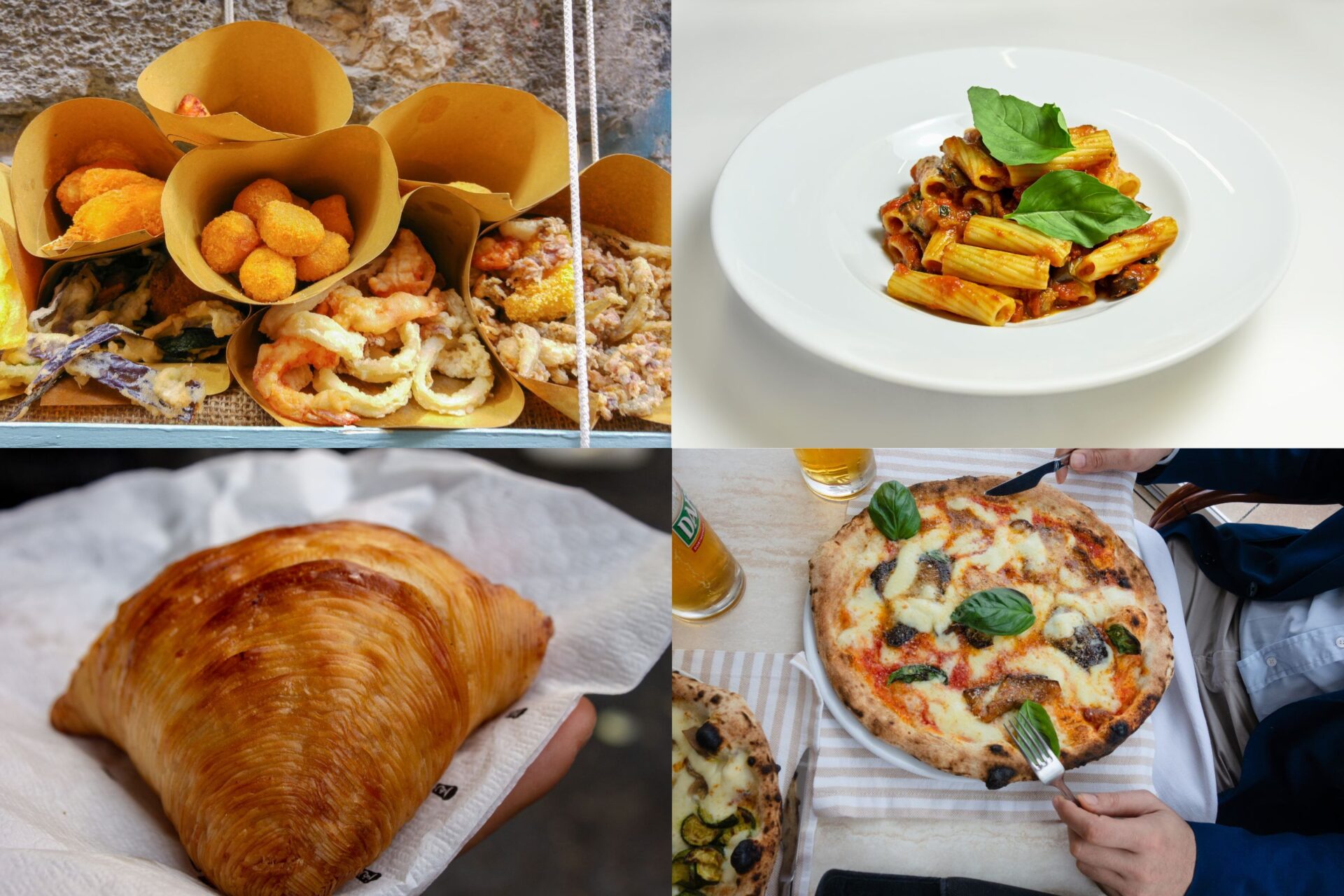Naples, Italy isn’t just the birthplace of pizza—it’s a food lover’s paradise where every corner reveals some new culinary treasure. On my recent trip winding through the narrow streets of this vibrant city, I finally understood why Neapolitan cuisine stands as one of Italy’s most celebrated regional food traditions.
From the perfectly crisp yet soft pizza marinara at Palazzo Petrucci to the morning ritual of cappuccino paired with a flaky sfogliatella pastry, Naples offers an authentic taste of Italian food culture that, honestly, you just can’t find anywhere else.
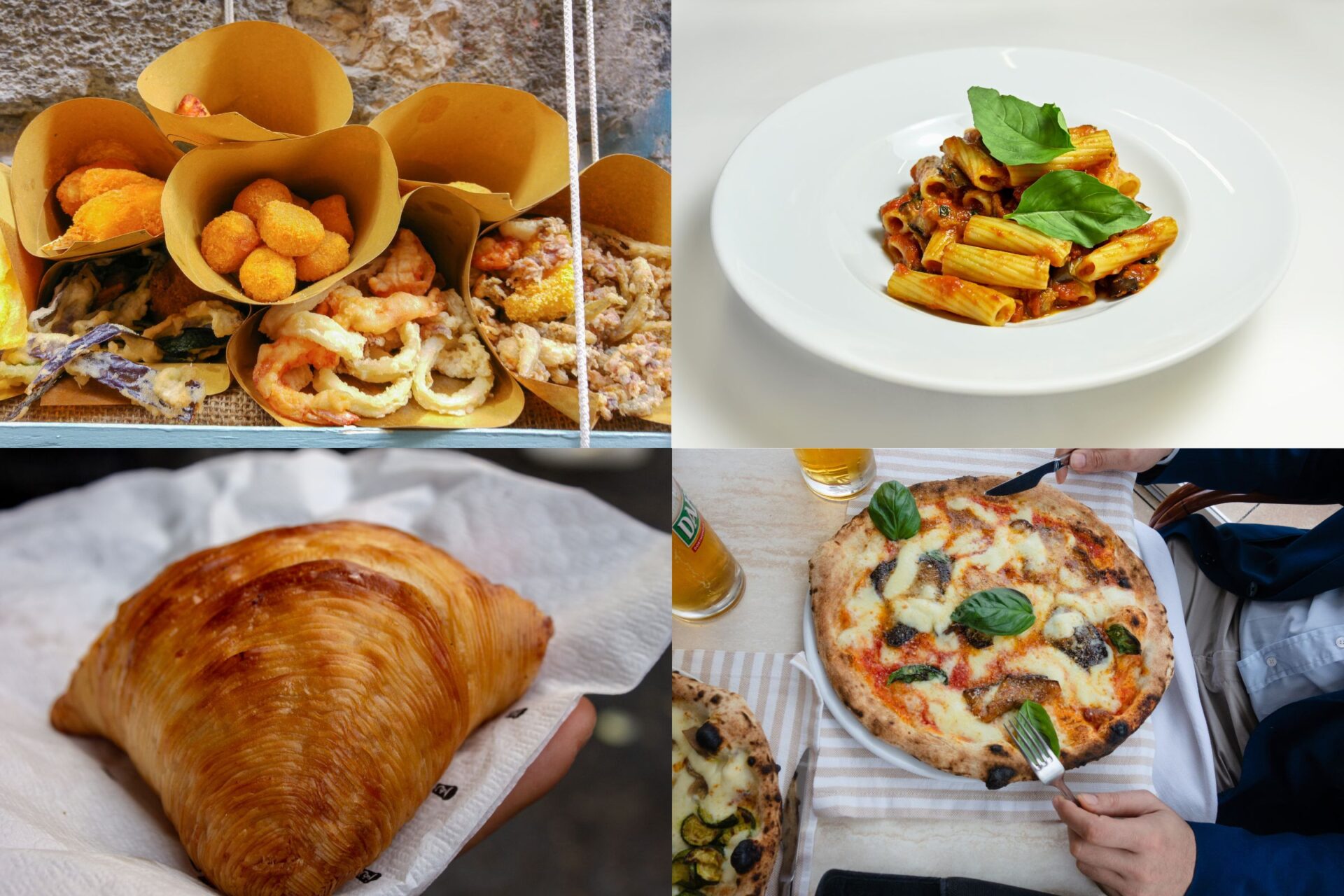
Walking through Naples feels like stepping into a living cookbook of Campania’s food history. The city buzzes with energy as locals gather around street food vendors selling small fried pizzas and pastries.
Restaurants here serve up incredibly fresh seafood pasta dishes, showing off the bounty of the Mediterranean. Most of the best food moments happen at small, family-run spots where recipes have been tweaked and perfected for generations.
My food journey through Naples taught me that timing is everything. Each part of the day brings its own special foods and rituals.
Morning pastries melt into afternoon pizza, and then evening brings pasta feasts and cocktails at award-winning bars. I learned to just follow the locals—eat where they eat, and embrace the casual, passionate attitude toward food that makes Neapolitan cuisine so unique.
Uncovering Naples’ Legendary Pizza Scene
Naples doesn’t just claim the title of pizza’s birthplace—it’s where pizza lives and breathes as an art form, a cultural heritage, and a daily ritual for locals. Exploring the city’s iconic food scene, I found traditions that have survived centuries and still thrive in both historic and neighborhood spots.
Neapolitan Pizza: Origins and Traditions
The authentic Neapolitan pizza started out in the 18th century as cheap street food for the working class. Now, true Neapolitan pizza follows strict rules—hand-kneaded dough, wood-fired ovens at 900°F, and a cooking time that’s just 60-90 seconds.
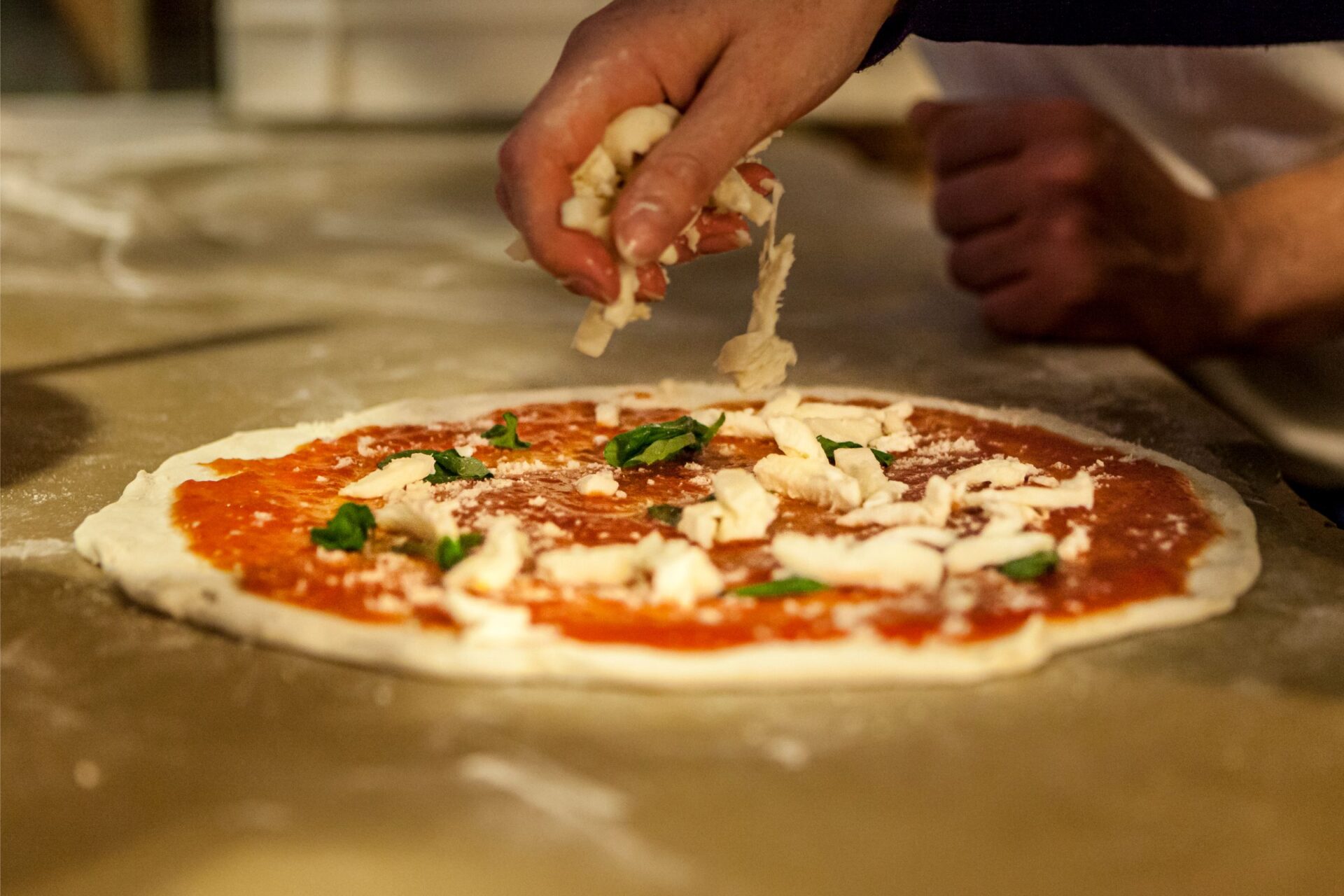
What makes these pizzas so special? It’s the soft, chewy crust with little leopard spots of char and a slightly soupy center. I watched pizzaiolos (pizza makers) perform their craft with such precision that UNESCO even recognized it as cultural heritage.
Local flour, San Marzano tomatoes, and fresh buffalo mozzarella make up the holy trinity of ingredients. Most traditional pizzerias keep menus surprisingly simple.
At Mattozzi, open since 1833, I realized they focus on perfecting the classics instead of chasing endless variations.
Finding the Best Pizza Margherita
The Margherita is Naples’ most iconic pizza—tomato, mozzarella, basil, olive oil, and that’s it. Its simplicity means only perfection will do.
My favorite Margherita came from Antica Pizzeria da Michele, open since 1870. They serve just two kinds (Margherita and Marinara), and they’ve truly perfected them over generations.
The line often snakes down the block, but honestly, the wait is worth it.
Other essential stops on my pizza journey:
- Pizzeria Starita: Where tradition meets innovation
- Sorbillo: Known for their enormous, pillowy crusts
- Da Attilio: Famous for their star-shaped pizza
At Umberto in the Spanish Quarter, I found a more local vibe, far from the tourist crowds. Their Margherita hits the perfect balance of acidity and creaminess, with a crust that’s both crisp and tender.
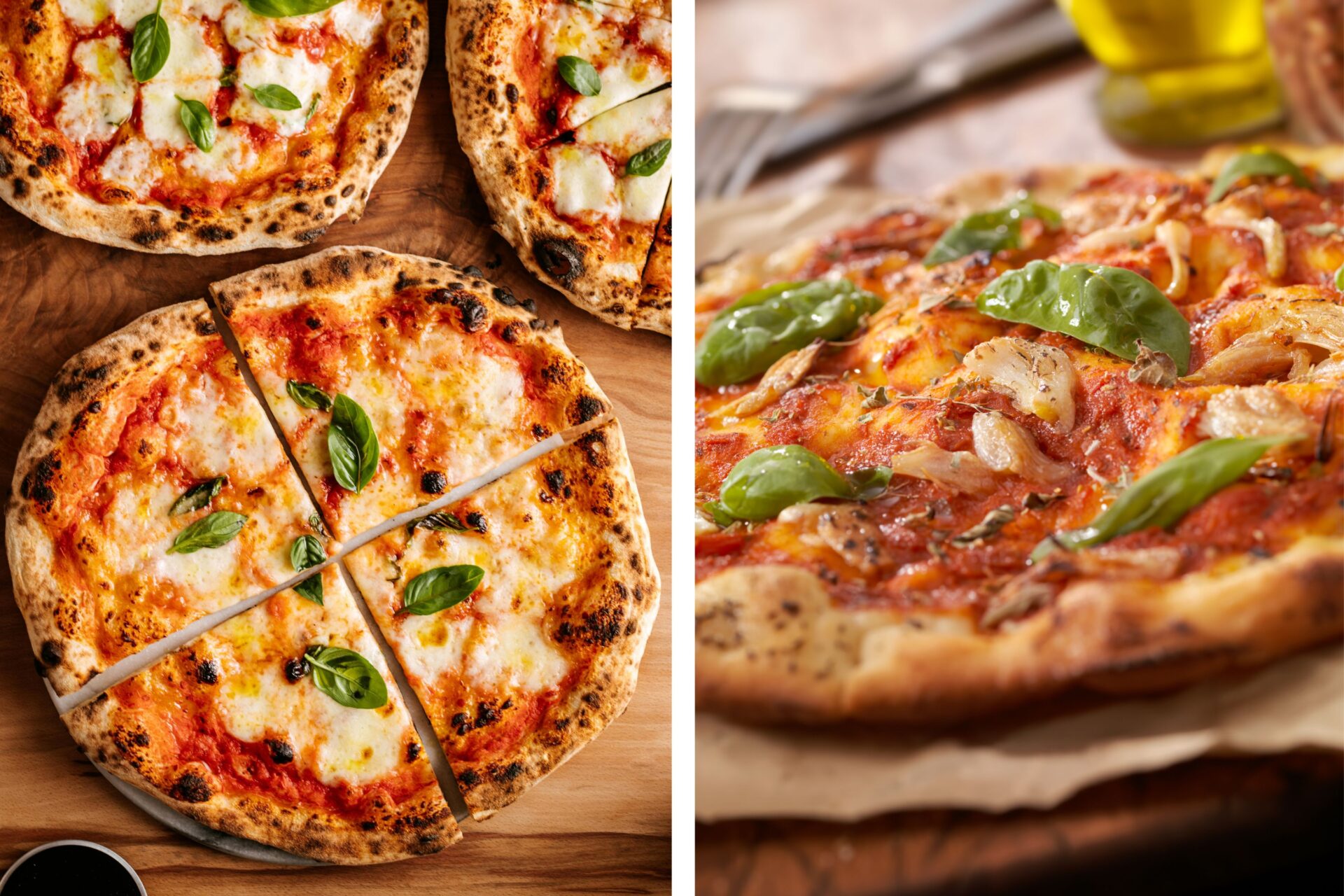
Pizza Fritta and Other Street Favorites
Naples doesn’t stop at traditional pizza. The city offers street variations you won’t find elsewhere.
Pizza fritta (fried pizza) became popular during WWII when wood for ovens was scarce. This calzone-like creation gets stuffed with ricotta, provola cheese, and cured meats before a dip in hot oil turns it golden and crisp.
I found the best at Antica Pizza Fritta da Zia Esterina Sorbillo, where they master the balance between crisp and chewy.
Other street pizza must-tries:
- Portafoglio: A folded pizza “wallet” you eat on the go
- Montanara: Deep-fried dough topped like a pizza, then finished in the oven
- Pizza all’acqua: “Water pizza” with just a few toppings
The Mercato di Porta Nolana bursts with small vendors selling street pizza. I watched locals order pizza a libretto—folded in four like a book—making it perfectly portable for the daily commute.
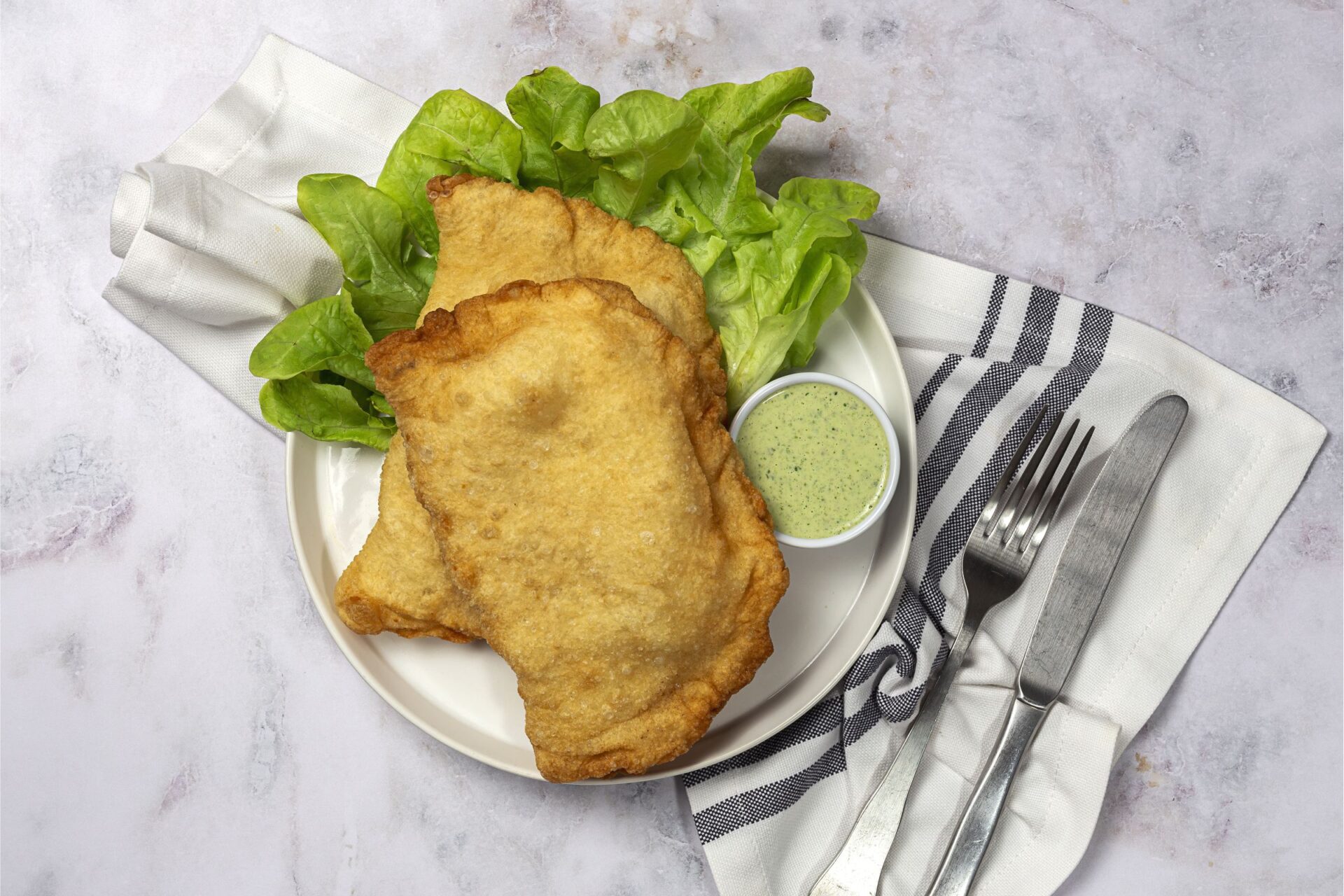
Pasta Dishes and Traditional Foods to Savor
Naples offers an impressive variety of pasta and traditional dishes that tell the story of the city’s food heritage. There’s a lot more than pizza here—these dishes bring out the true flavors that Neapolitan families have savored for generations.
Signature Neapolitan Pasta Specialties
When I wander through Naples, I’m always drawn to trattorias serving pasta alla genovese. Despite the name, this dish is pure Naples: tender onions slow-cooked for hours until they melt into a rich sauce that coats ziti pasta.
Another must-try is spaghetti alle vongole (spaghetti with clams). The pasta gets tossed with fresh clams, garlic, olive oil, and sometimes a hint of chili. It’s simple, but the fresh seafood flavor shines.
Don’t skip pasta e patate, a humble but delicious mix of pasta and potatoes in a tomato-based sauce, often made even better with smoked provola cheese. I found my favorite at Trattoria Da Nennella in the Spanish Quarter, where they add a crust of bread to soak up every bit of sauce.
Neapolitan Ragù: Heart of the Sunday Table
Neapolitan ragù sits at the heart of Sunday family meals all over Naples. Unlike the version from Bologna, this ragù simmers for at least six hours, sometimes overnight.
Large cuts of beef and pork cook slowly in tomato sauce until they’re meltingly tender. The sauce turns deep red and rich, perfect for coating ribbons of fresh pasta.
I’ve watched Neapolitan grandmothers start their ragù early Sunday morning, filling entire apartment buildings with that mouthwatering aroma. For a true taste, hit up Tandem Ragù in the historic center—they pair their ragù with paccheri, big tube pasta that soaks up every drop.
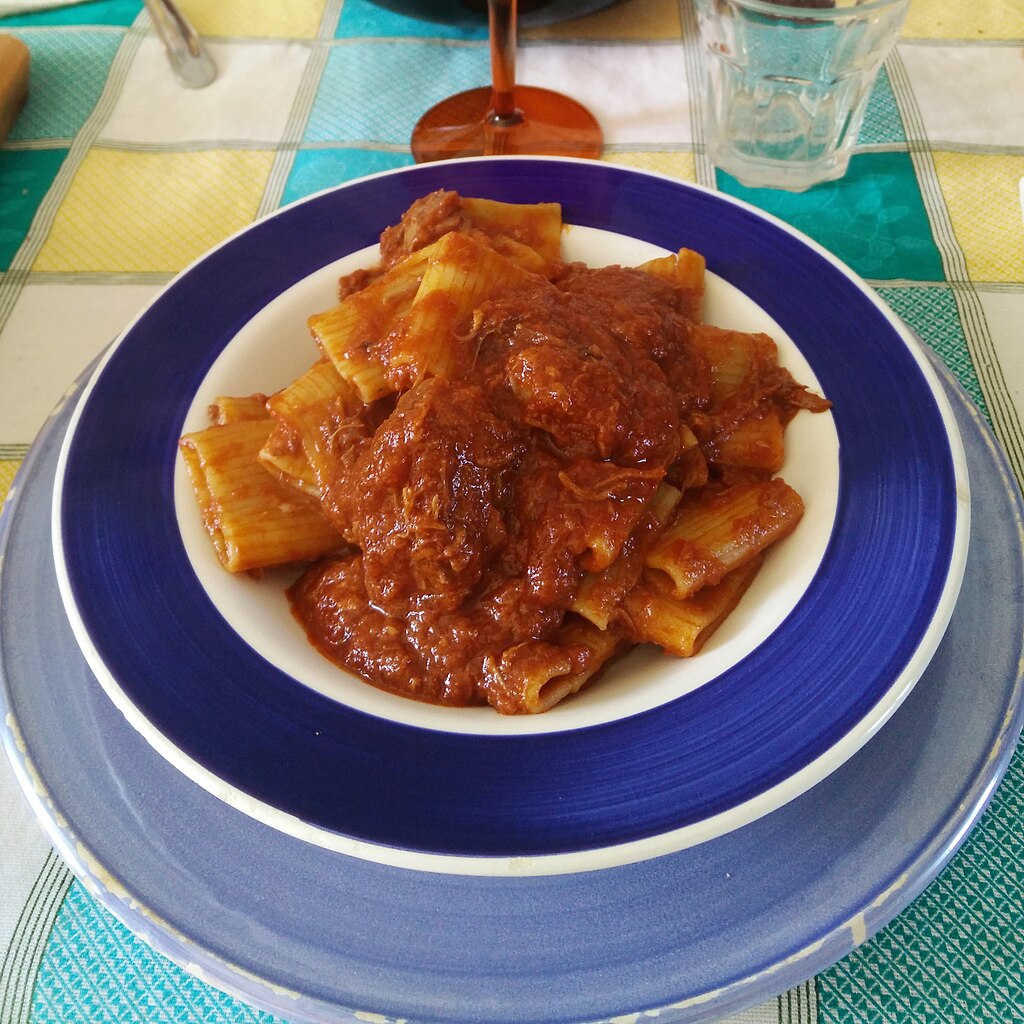
Image Source: Wikimedia Commons
Casatiello: The Savory Easter Bread
During Easter, I always hunt down casatiello, a savory bread that’s a staple of Neapolitan holiday tradition. This dense, donut-shaped bread is packed with cubes of salami, pecorino, and provolone cheese.
The most distinctive touch? Whole eggs baked into the top, held by a cross of dough—a nod to the crucifixion. The eggs, still in their shells, come out beautifully browned after baking.
Local bakeries start making casatiello weeks before Easter. I love the version from Panificio Rescigno, where they use a generations-old recipe with just a hint of lard for extra richness. These days, some bakeries even offer mini versions year-round for curious tourists.

Image Source: Flickr
Heavenly Pastries and Sweet Treats
Naples is a paradise for pastry lovers, with sweet traditions that stretch back for centuries. On my visits, I discovered that Neapolitan desserts balance sweetness with complex flavors and textures that keep things interesting.
Sfogliatella and Babà: Iconic Neapolitan Desserts
The crispy, shell-shaped sfogliatella is a must when you’re in Naples. I love watching pastry chefs work their magic, creating dozens of delicate layers that give this treat its name (“small, thin leaf”).
You’ll find two kinds: riccia (the crispy, flaky one) and frolla (with a smoother shortcrust).
Babà is another Neapolitan icon I never skip. These mushroom-shaped yeast cakes get soaked in rum syrup until they’re incredibly moist. Many cafés add cream filling or fruit toppings for a twist.
Historic pastry shops like Attanasio near the central station or Scaturchio in the historic center make the best sfogliatella and babà. I always try to get there in the morning, when everything’s fresh from the oven.

Pastiera: A Taste of Neapolitan Easter
Pastiera holds a special place in Neapolitan tradition as an Easter dessert, though honestly, you can find it year-round in many pastry shops. This wheat berry and ricotta tart gets perfumed with orange blossom water and candied citrus peel, making it unlike anything else.
Some say the dessert has ancient roots, even connected to pagan spring celebrations. Neapolitan families usually prepare pastiera days before Easter to let the flavors really develop.
During Easter, I make a beeline for Gran Caffè Gambrinus. Their version nails the balance of sweetness and those aromatic orange notes. The creamy filling and shortcrust pastry work together perfectly.
Hidden Gems: Zeppoline, Palle di Riso, and More
Naples hides plenty of lesser-known sweets that are worth seeking out. Zeppoline (small fried dough balls) pop up during Christmas and the feast of San Giuseppe in March. I’ve enjoyed them plain, dusted with sugar, or filled with custard.
Palle di riso (rice balls) combine sweet rice with cherry jam and a chocolate center. It’s amazing how Neapolitans turn simple ingredients into such memorable desserts.At Christmas, keep an eye out for struffoli—tiny honey-soaked fried dough balls piled up in decorative mounds. The best ones have a hint of citrus zest and colorful sprinkles. I found some fantastic homemade versions at little bakeries in the Spanish Quarter.
Fiocco di neve (“snowflake”) is another treasure—a cloud-like pastry filled with cream that just melts away. Pasticceria Poppella makes the city’s best, and you’ll see locals lining up for this newer addition to Naples’ sweet lineup.
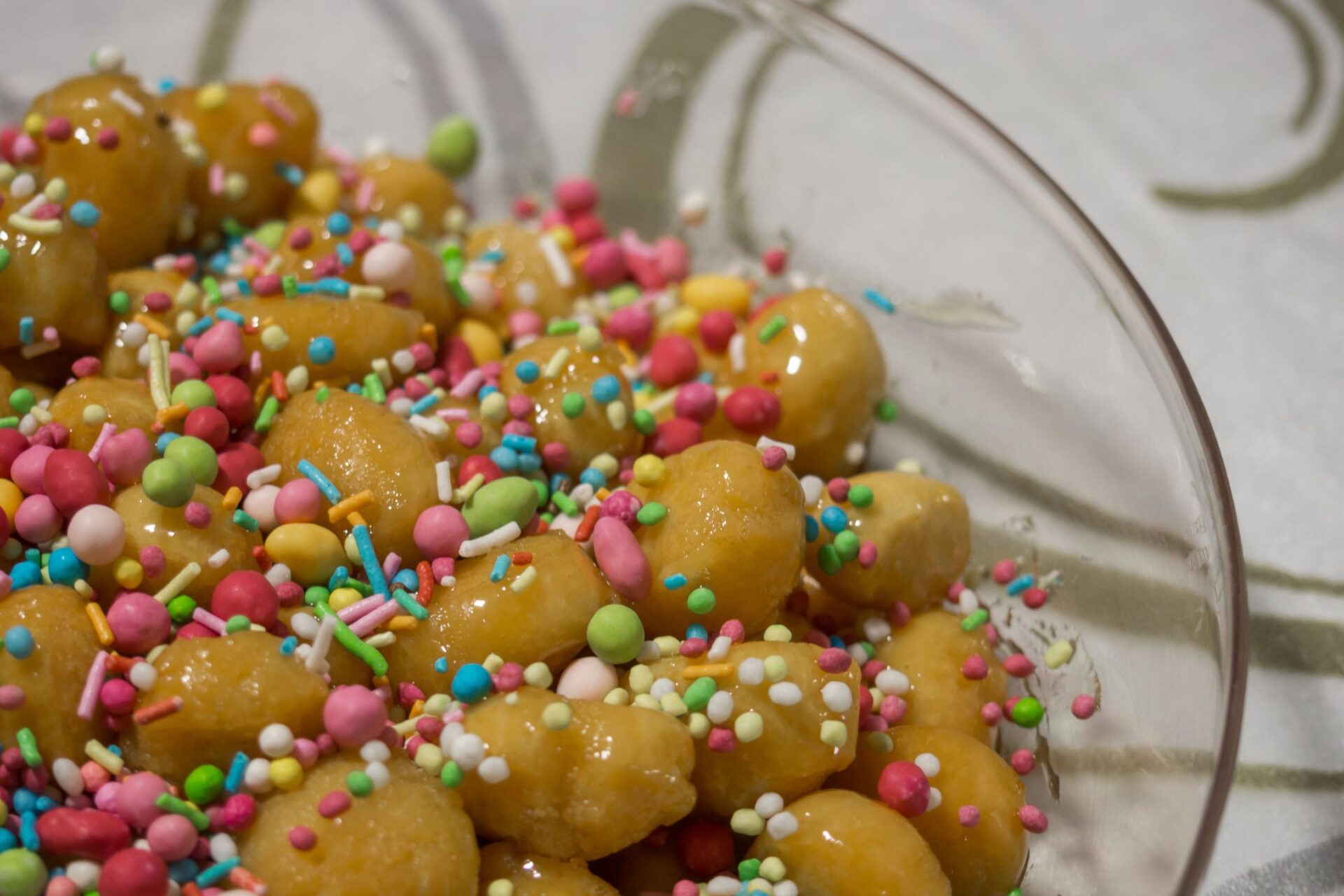
Fresh Seafood and Coastal Flavors
Naples sits on the Mediterranean, so the seafood here rivals the city’s famous pizza. The fish markets and seaside restaurants show off the bay’s bounty in dishes that are both simple and unforgettable.
Classic Fried Fish and Street Food Gems
Strolling Naples’ winding streets, I stumbled onto cuoppo di mare—paper cones loaded with mixed fried seafood that locals snack on while walking. Usually, you’ll find crispy calamari, tiny fish, and shrimp, all lightly battered and perfectly salted.
For the best fried fish, I always head to the Mergellina harbor area. Small family-run friggitorie (frying shops) serve up fresh catches straight from the morning boats.
Don’t skip alici fritte (fried anchovies)—a simple but crazy tasty Neapolitan specialty.
The seafood at Port’Alba market blew me away. Fishmongers display their glistening catches while nearby food stalls cook them up right then and there. I watched locals haggle for the freshest fish and then have it fried or grilled on the spot.
Sampling Octopus and Fresh Fish on the Bay
Restaurants along the Bay of Naples offer jaw-dropping views and even better seafood dishes. I tried polpo alla luciana (octopus simmered with tomatoes and olives) while staring at Mount Vesuvius across the water—a moment I won’t forget.
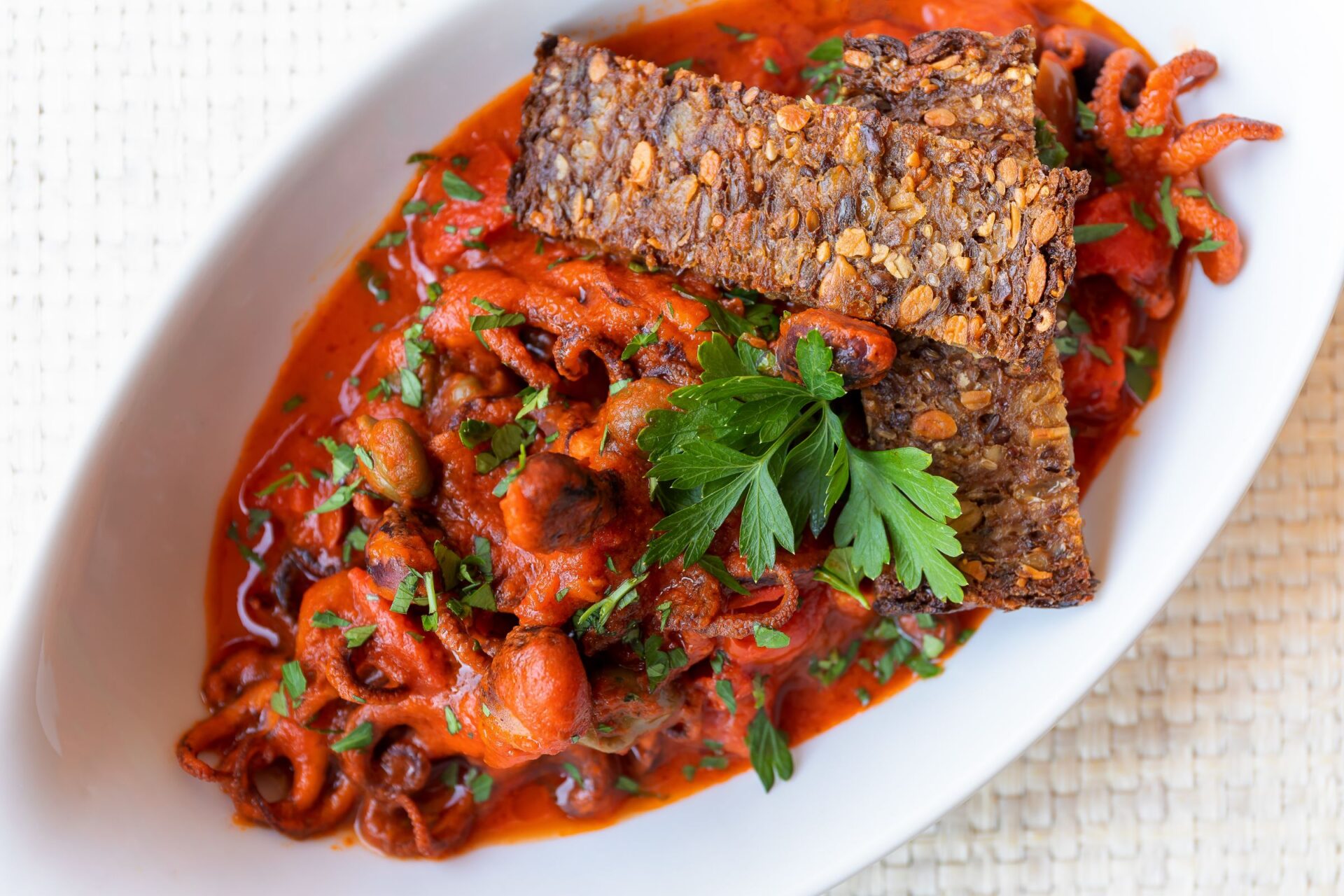
Spaghetti alle vongole (spaghetti with clams) is non-negotiable in Naples. The best versions use tiny local veraci clams, white wine, garlic, and just a hint of chili.
For a truly authentic meal, I like to head to Borgo Marinari near Castel dell’Ovo. This little fishing hamlet is packed with traditional restaurants where fishermen deliver their catch straight from the boats.
I’ve had sea bass baked under salt and grilled orata (sea bream) so fresh they barely need olive oil and lemon.
Many restaurants also serve seafood dishes inspired by the nearby Amalfi Coast, using lemons and herbs that give this region its distinctive coastal flavor.
The Naples Café Experience: Coffee, Gelato, and Limoncello
Naples has a café culture that’s about way more than just food. The city’s cafés double as social hubs, where locals and visitors come for real Italian coffee, refreshing gelato, and the region’s famous limoncello.
Espresso and Italian Coffee Rituals
In Naples, coffee isn’t just a drink—it’s a ritual. Most locals start their day with a quick espresso at the counter, standing elbow-to-elbow with everyone from businesspeople to laborers.
The traditional Neapolitan espresso is stronger and more concentrated than what you might get back home. They serve it in tiny cups, usually with a glass of water to cleanse your palate.
For something sweeter, try a caffè con panna (espresso with whipped cream) or the local favorite, caffè alla nocciola (hazelnut coffee). Many cafés also offer caffè sospeso or “suspended coffee”—a lovely tradition where you pay for two coffees but only drink one, leaving the other for someone in need.
The best time for coffee? Mid-morning, when cafés buzz with energy and conversation. Don’t miss historic spots like Gran Caffè Gambrinus, where writers and artists have gathered for generations.

Indulging in Authentic Gelato
There’s nothing better than wandering Naples’ cobblestone streets with a cone of real Italian gelato. Unlike commercial ice cream, Neapolitan gelato has less air and fat, so the flavors are much more intense.
Look for shops with signs reading “gelato artigianale” (artisanal gelato) for the real deal. These places make gelato fresh daily using seasonal ingredients.
Classic flavors to try:
- Pistacchio (pistachio)
- Nocciola (hazelnut)
- Stracciatella (chocolate chip)
- Limone (lemon, often with local Sorrento lemons)
The best gelaterias usually have lines out the door, especially on summer evenings. I suggest going between 3-5 PM to dodge the longest waits and still get the freshest batches.
Limoncello and Local Wines
After dinner, Neapolitans usually enjoy a glass of limoncello—the bright yellow liqueur made from local lemon zest. They serve it ice-cold in little glasses, and it’s the perfect digestive.

Many cafés make their own limoncello, and honestly, it’s better than anything you’ll buy in a shop. The best versions taste smooth and sweet, with enough citrus tang and no harsh alcohol burn.
Naples also boasts some excellent local wines from the Campania region. Look for Greco di Tufo (a crisp white) or Aglianico (a robust red) on café menus.
For a real local vibe, drop by an enoteca (wine bar) in the evening. These spots usually serve small plates alongside their wines, making it a perfect place to unwind after a day of exploring.

